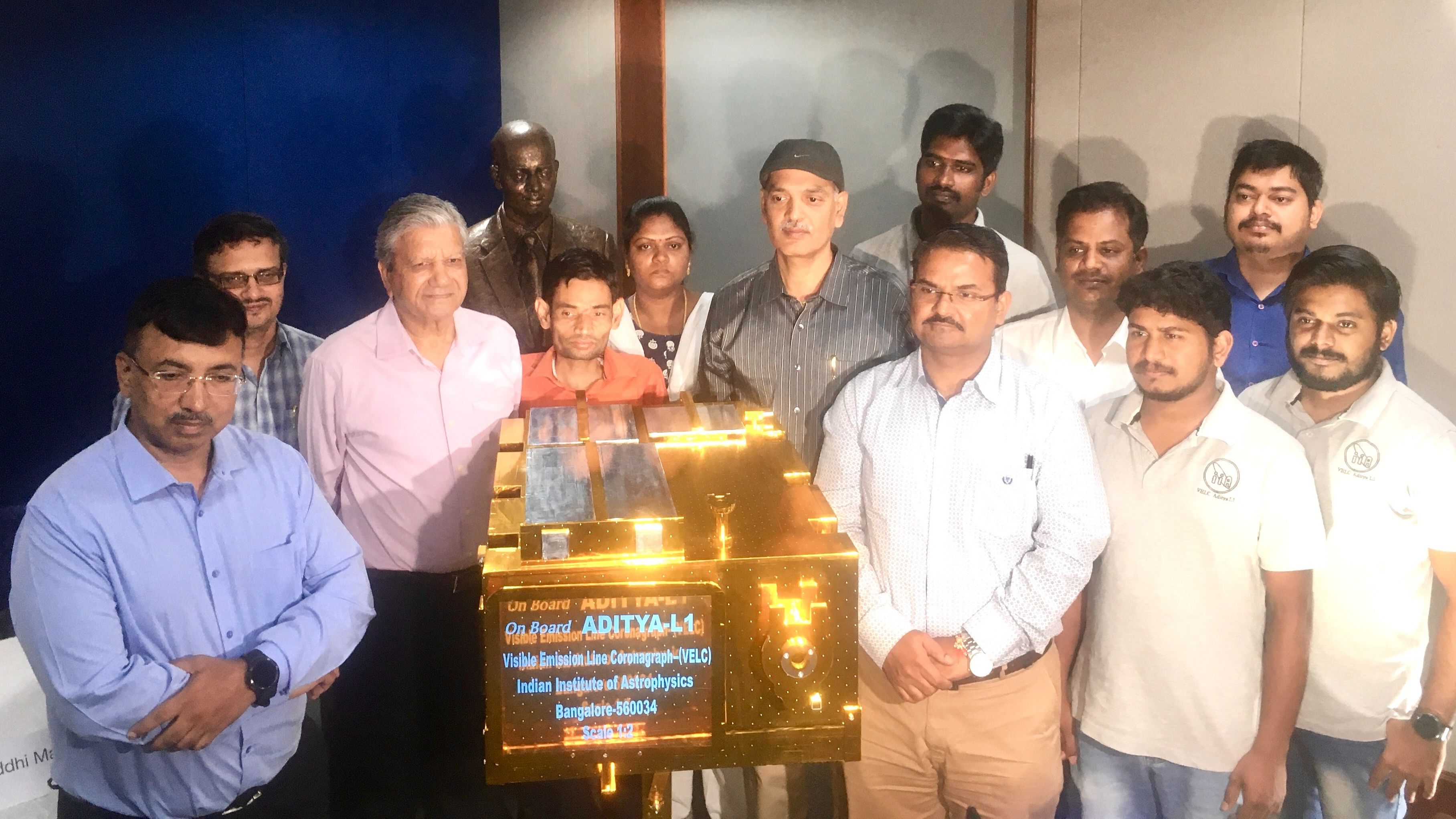
The VELC team with a replica of the payload at IIA on Friday.
Photo credit" DH Photo/R Krishnakumar
The Visible Emission Line Coronagraph (VELC) on the Aditya-L1 spacecraft is expected to start sending images of the sun by the end of February 2024, scientists and engineers at the Indian Institute of Astrophysics (IIA) said on Friday.
IIA has developed VELC, one of the seven payloads on board the Indian Space Research Organisation (Isro)’s solar mission which is scheduled to take off from Sriharikota on Saturday.
The spacecraft is expected to be placed on L1 (the first Lagrange point in the sun-earth system) by the middle of January. The smaller instruments will be tested first and data from VELC could be expected by the end of February, Prof Jagdev Singh, the founder Principal Investigator of the VELC programme, told reporters here.
VELC, weighing 190 kg, is aimed at studying the solar corona, the sun’s outermost layer, and the dynamics of large expulsions of plasma and magnetic fields from this layer, known as Coronal Mass Ejections. The nominal life of the satellite is estimated at five years but the payload could last longer, the scientists said.
Uninterrupted view
The payload was integrated, tested, and calibrated at IIA’s Centre for Research and Education in Science Technology (CREST) campus in Hosakote. With 40 optical elements including mirrors aligned inside, VELC can cut out the extremely bright light from the surface of the sun -- its photosphere -- and observe the corona without interruption.
The extremely polished primary mirror on VELC, developed by Isro’s Laboratory for Electro-Optics Systems, reduces light scatter inside the payload. Some of the earth’s atmospheric gases present in the other payloads may form deposits on this 19 cm-diameter primary mirror and result in light scatter. The shutter on VELC will be opened last to avoid this.
More than 90% of the payload’s components are indigenously developed, S Nagabhushana, a member of the programme’s engineering team, said.
Four of the seven Aditya-L1 payloads, including VELC, are telescopes that observe the sun in visible, infra-red, ultraviolet, low- and high-energy x-rays while the three in-situ payloads will measure the plasma properties of solar wind and the magnetic field at the spacecraft’s location.